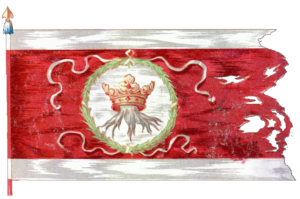Here are more pictures of Brassó and its fortifications:

Brassó, (Brasov, Kronstadt) Transylvania, it is in Romania. Naturally, the history of the city started a millennium before the German settlers and Hungarians. This well-fortified city was the main center of the Saxons of Transylvania. The settlers had come primarily from the Rhineland and the Moselle region, with others from Bavaria and even from distant parts of France, invited by the kings of Hungary. Now, we can find mostly only traces of their magnificent built heritage as they had to leave their homeland during the dictator’s years, beginning from the 1970s.

Germans living in Brassó were mainly involved in trade and crafts. The location of this city at the intersection of trade routes linking the Ottoman Empire and Western Europe, together with certain tax exemptions, allowed Saxon merchants to obtain considerable wealth and exert a strong political influence. Here is more about the Saxons of Transylvania:
https://www.hungarianottomanwars.com/essays/who-were-the-german-saxons-in-transylvania/
The town’s “Black Church” is claimed to be the largest Gothic-style church in Southeastern Europe. Moreover, it is the largest Gothic church between Wien and Istanbul, not only in southeastern Europe. The name “Brassó” first appeared in King Béla IV’s document in 1252. The Mongols put it on fire in 1285: remember, it was the second Mongolian invasion against Hungary but this time, it was easily repelled.

The walls of the city were built in 1384. The first Ottoman attack devastated the city when the troops of Sultan Murad II took Brassó in 1421 and had its walls pulled down. The walls of the actual city were built after 1421 because the first settlement of Saxons was near Sprenghi Hill, only after the Turkish destruction they moved to the location that is now the downtown of Brassó. King Sigismund held a Diet here in 1427. Lord Hunyadi János allowed the burghers to rebuild the walls of the city, using the stones of the old castle of Cenk in 1455. His son, King Matthias Corvinus stayed in Brassó in 1467.
After the Battle of Mohács in 1526, the Saxons of the city became loyal to King Ferdinand I and resisted King Szapolyai János. The Sultan allowed his vassal, Petru Rares to enter Transylvania and defeat the troops of King Ferdinand in 1529 – he took Brassó, too, destroying its castle to the ground. However, Transylvania later became the property of King Szapolyai János.

During the Dual Kingship, Szapolyai had to pretend an alliance with the Ottomans to keep Eastern Hungary which later became the Transylvanian Principality. Sultan Suleiman even appointed Gritti, the illegitimate son of the Venetian Doge as the Governor of Hungary on his behalf. The infamous Ludovico Gritti wanted to gain bigger influence than Szapolyai had and he was waiting with 7,000 Ottoman troops at Brassó to receive the nobles of Transylvania to make them pay tribute to the Sultan. However, he went too far. Szapolyai was able to get rid of him soon. Later, the renegade Gritti was slain by the Transylvanian nobles when he had fallen out of the Sultan’s grace.

Around 1580 the town had 8,000 inhabitants. Voivode Michael took Brassó in 1599. Prince Székely Mózes was slain by Voivode Radu Serban in 1603 near Brassó, too. You can read more details about this part of the history here:

The first book printing office of Transylvania was established here in 1529 and the first book ever printed in the Hungarian language was also made here around 1580. The first printing machine from Brassó was the one of Johannes Honterus. In the famous Saxon college of the town, students were taught not only in German but in the Hungarian language as well, beginning in 1637. Prince Báthory Gábor was defeated at Brassó in 1611 by the combined forces of the Saxons and Wallachians. The city and the church were put to the torch in 1689 by General Caraffa’s mercenaries, hence the name of the famous Black Church…

The so-called “kuruc” troops sacked Brassó in the years of Rákóczi’s War of Independence. Later, the town was taken by General Bem in 1849. The troops of the Russian czar took it on 19 June 1849, and the siege of the citadel lasted only for a day. After this, the military role of the town ceased to exist. The Romanian army marched in Brassó on 28 August 1916 but their units suffered a defeat not much later.
There was a heavy earthquake in 1940, and the American planes also ruined lots of buildings in 1943 and 1944. After the Soviets seized the town, the deportation of the German Saxons began. Several earthquakes shook the town, the last one was in 2004. In 1989, there were demonstrations against the communist system of Ceausescu, and many people lost their lives during that time.

Throughout its history, Brassó had to suffer many natural disasters and lots of destruction caused by humans. Here is a summary of them:
Major earthquakes: 1662, 1738, 1802, 1940, 1977
Storms: 1457, 1490, 1599, 1667, 1673, 1682, 1913
Conflagrations: 1461, 1519, 1689, 1718
Sieges: 1241 (Mongols), 1421 (Ottoman Turks), 1438 (Ottoman Turks), 1658 (Crimean Tatars)
Plagues and epidemics: 1495, 1510–1511, 1530–1531, 1572, 1588, 1602
Brassó was called Stalinstadt between 1950-60.
According to the census of 2002, there lived 258,042 Romanians, 23, 176 Hungarians, 1,717 Germans, 762 Gipsies (Roma), 120 Jewish, and 103 Lipovan people in the city.

Become a Patron! Send me a one-time donation via PayPal or "Buy me a Coffee":
Thank you very much, köszönöm szépen.